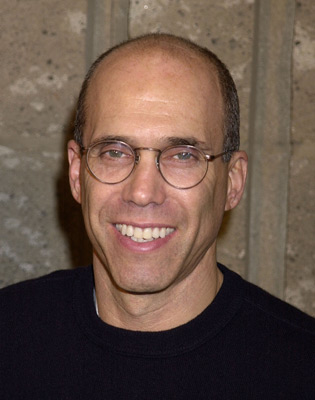
As previously reported here the big buzz this year at ShowEast is definitely digital 3D. In case there were still any doubters here at ShowEast, DreamWorks Animation topper Jeffrey Katzenberg turned up on Tuesday morning to preach the 3D gospel to 1,000 or so attendees at a breakfast sponsored by Technicolor Digital Cinema and Barco Digital Cinema. Joining Katzenberg on the panel, which was moderated by NATO CEO John Fithian, was Chris Johnson, president of Chicago based Classic Cinemas.
Some of what Katzenberg had to say was recycled from a talk he gave NATO earlier this year. He explained that when DreamWorks was first started, there would be five or six animated movies a year, each being considered special. But with 15 or 16 animated films being released each year now Katzenberg wondered, “How do we elevate our product back to a level where we would be considered exceptional and unique?”
Katzenberg firmly believes that 3D is the answer. DreamWorks animated releases will all be 3D starting in 2009 and Katzenberg points to high profile filmmakers who have begun working in the medium, including George Lucas, Robert Zemeckis, Peter Jackson and James Cameron. He credits filmmaking tools that were not around two years ago for enabling an advanced stereoscopic filmmaking revolution. In fact, Katzenberg and Cameron, who is presently working on the 3D film “Avatar“, have scheduled a training session with 150 top Hollywood filmmakers to demonstrate all the tools and technology now available to create 3D movies.
Whether exhibiting films in 3D will take off may come down to simple economics. Katzenberg said it costs roughly $15 million to take one of DreamWorks animated features 3D. He figures it will be about the same for films that are being made from the outset as 3D releases since they essentially have to make the film twice; once for 3D and once for traditional 2D screens. More telling however, is that Johnson says he has seen incremental box office growth at his theaters when showing 3D films next to the same release in 2D.
“Whenever you have a technology that increases your gross you want to look into that,” said Johnson. “If it is only going to get better than we are in good shape.”
Johnson admitted that he increased the ticket price for 3D releases by a dollar which Katzenberg felt was too low. Though not allowed by law to suggest ticket prices directly to exhibitors, Katzenberg waved five fingers in the air at the audience as if to greet them, suggesting a $5 surcharge on 3D films. “Much like with Imax, you should and can and will, I hope charge an incremental price for this experience,” Katzenberg urged, going on to say that an exhibitor’s increased revenue from just one stereoscopic release would pay to convert a digital cinema system to 3D.
And according to Katzenberg exhibitors better start converting their screens soon, not only to digital, but also to digital 3D, as he believes a majority of all releases will move be 3D in the next several years. He made it clear that he believes 3D is the wave f the future and exhibitors better get on board.
“This is the first opportunity in decades for the exhibition industry to significantly change the theatrical experience,” Katzenberg proclaimed. “We are doing our part in Hollywood to roll the product out. . . I need you to stop being skeptical about us. I would just like you to believe in your business as much as I do.”
- Edinburgh Filmhouse Secures 25-Year Lease, Announces New Patrons - July 11, 2024
- Mixed Results for Global Box Office During First Half of 2024 - July 10, 2024
- George Rouman, Cinema Operator and Industry Champion, Dies at 51 - June 13, 2024